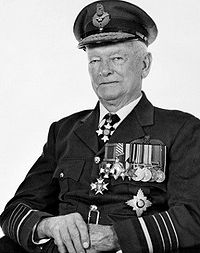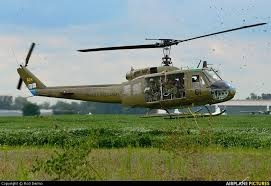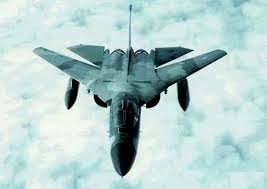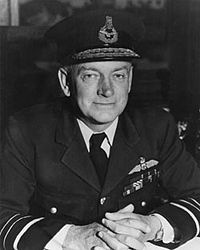Four Star Australian Freemason:Bro. Air Chief Marshall Sir Frederick Scherger, KBE, CB, DSO, AFCEdited and rewritten by WBro D Hudson from material and research written by RWBro. Sean Thomson PDGM.
Back in 2014 I received an email from RWBro Sean Thomson PDGM about our Famous Freemasons list on www.lodgedevotion.net pointing out it was missing the very notable Sir Frederick (Fred) Scherger. I failed
to realise the significance of Brother Scherger at the time, but he is
important not only for being an outstanding and accomplished individual and a
Freemason – but particularly because he held the equivalent of a Four Star Rank
in the Australian Defence Forces – making him the highest military ranking Australian Freemason known. He also
held the lofty position of Chairman of the Chiefs of Staff Committee (COSC) 1961–66:, the senior Australian military position at
the time
What was also significant, is that while lower ranking personnel are noted in lists of Freemasons, Bro Scherger is not. This makes brother Sean’s suggestion that Frederick Scherger be included on our list of Famous Australian Freemasons a global “scoop” – being the first time he has been noted as a Freemason on the web. Bro Thomson delivered a speech on this illustrious brother in Werribee Mark Lodge No 98, on the 26th March 2014. Scherger had been a Mark Man and a member of that very lodge. As Brother Thomson pointed out in that address, Scherger is not included in lists like those in “Real Men War Aprons”, on Wikipedia, nor on Grand Lodge’s web site. At the time he was also not included in Devotion’s “Large List of Australian Freemasons”. In that speech Sean specifically notes my list had o 5 x 1 star officers, but not RWBro. Brig. Keith Colwill CBE; o 14 x 2 star officers; o 6 x 3 star officers; but o No 4 star officers
Bro. Air Chief Marshall Sir Scherger, of Werribee Mark Lodge No.98 was Australia’s first “4 star” Air Force Officer and the highest ranking serviceman ever known to be an Australian Freemason. Now I’ve got a four star officer in my list. Born on 18 May 1904, in Cathcart, Victoria, Scherger died in Kew, Victoria on 16 Jan 1984. A book was published on his life “Scherger: A biography of Air Chief Marshal Sir Frederick Scherger “ by Harry Rayner . His biography is extensively reported in the web and worth reading, but below is a brief outline of some of his life and achievements. Bro Fred Schergers’ paternal grandfather was German and from the age of 10 during WW1 he was teased at school for being German. Always top of his class, he graduated RMC Duntroon winning the King’s Meal for the best academic marks and began an extremely notable military career. He organised his transfer to the RAAF in 1924 and trained at the No.1 Flying Training School, Point Cook and is described as “possibly our best Air Force pilot between the wars.” As an aside, he made Australia’s first public freefall parachute jump, at Essendon Airport in 1926. He was a fighter pilot, test pilot and chief flying instructor before becoming one of the “top brass” in the ADF. Masonically , he is known to have been advanced in Werribee Mark Lodge 7 July 1930 and resigned clear 3 September 1934 with the notation “Sailed for England”. In that year, he was promoted in Squadron Leader and went to England for training with RAF. This explains his resignation, but after he was WM of Adastral Lodge No. 397, 1939-1945 showing that his involvement with Freemasonry did not cease in 1934.* There are many notable antidotes about him, like when his Wing Commander asked him drop a letter from his fighter to a lady on board a ship, during which he was caught doing an illegal manoeuvrer, for which his Group Captain said, “Good. I’m glad to see we’ve still got a few in the Air
Force with spirit”. In 1931, he won an Aero Club Derby in
Adelaide in his Bulldog fighter. He taught Federal Treasurer Richard (later
Lord) Casey to fly, (which upset the Federal Opposition), he test flew the
American NA-16 at Laverton, for the CAC, which became the prototype for the
Wirraway trainer. Promoted to Wing Commander in 1939, he was Director of
Training at HQ and when war broke out, he was tasked with increasing the pool
of flying instructors. Scherger was awarded the Air Force Cross in 1940 and was
promoted to Group Captain and later placed in charge of air power in Darwin in
October 1941 and increased operational readiness, without direction from HQ .
During the attack on Darwin on 19 Feb 1942, a Curtis P40 crashed in front of him, and then his car was strafed. Scherger and Air Marshall Richard Williams ended up sharing a trench as the bombing continued. A disaster, 235 people killed with 300-400 wounded, Australia and the USA lost virtually all their aircraft present that day. Scherger and all the other leading Darwin officers were stood down pending a Commission of Enquiry but Scherger was the only military leader to come out of this with high praise for his bravery and leadership. Scherger then criticized senior command for their lack of readiness for the Japanese attacks. They effectively sacked him, posting Scherger to a number of back room jobs over the next few months. Scherger complained to the Commissioner who had praised him and they went directly to the Air Minister. Scherger’s bosses got a swift kick. From that point on Scherger was untouchable, as he had credibility and political protection. Scherger established Australia’s top mobile air strike force in November 1943, in SW Pacific, (Aust First Tactical Air Force). He commanded Vengeance bombers, Kittyhawk fighters and ancillary units. Headquartered in New Guinea, he started working closely with the USAAF. Soon, his Australian squadrons were outperforming the Americans. Scherger was re-equipped with Bostons, Beaufighters and Beauforts, but was evicted from two bases, so that the much more numerous and higher quality new American aircraft could take precedence. He took part in the capture of Aitape and had its air base operational in three days. The USAAF commander in SW Pacific had given Scherger command of American air units for attacks on Aitape and Noemfoor Island in June 1944. Scherger was awarded the DSO, for his leadership in these two battles where he commanded 4 RAAF wings, 2 USAAF fighter groups and 2 USAAF bomber groups. Around this time he got his first star, when promoted to Air Commodore. In 1945 he command the First Tactical Air Force and took part in battles Tarakan, then Labuan during May and June 1945. By the time of the Balikpapan Borneo offensive in July, he had 25,000 personnel under his command. After the war , Scherger travelled to Japan to assess military air fields, then went to the UK for further training, later serving in Washington DC where he lead the Australian Joint Services Staff. He saw that Britain was a fading force in the Pacific and campaigned for Australia to strongly ally itself with the USA. He gained his second star, as Air Vice Marshall in 1950 and in 1953 Scherger was placed in charge of all Air Forces in the Malaya Emergency. Here he pioneered the use of helicopters to insert troops and “air shouting” loudspeaker aircraft, to urge the enemy to surrender. This methodology was adopted by the Americans is Vietnam. Scherger also abandoned the old WW 2 policy of saturation bombing of jungle and developed precision bombing of enemy positions. In 1954 the British Government knighted Scherger, for his services in Malaya. Later, Scherger instituted a review of the syllabus at Point Cook, making cadets graduate in science, majoring in applied physics, with a view to a future Air Force based on nuclear missiles. Scherger
gained his third star, when promoted to Air Marshall in 1957 and became Chief
of the Air Staff. Scherger was described by Air Marshal Hardman as "easily
the best material on offer”. He was Chief 1957-61. He then became the Chairman of the Chiefs of
Staff Committee (COSC) 1961–66:, the senior
Australian military position at the time. In this position he campaigned to see
Australia involved in Vietnam. In 1965
Prime Minister Menzies, gave Scherger his fourth star, when he was promoted to
Air Chief Marshall. He was the first RAAF officer to achieve this rank. There
have only been two since. His predeceasing Chairmen of COSC had not advanced beyond three-star rank.
Scherger remained as Chairman until retiring from military life on 18 May 1966,
having twice had his term extended by unanimous vote of Federal cabinet
He shifted our Air Force emphasis northwards, by building high quality bases in Darwin, Katherine, Learmonth, Derby and Weipa, one named Scherger. He opposed British pressure to commit to the TRS-2 bomber, and instead pushed for the American F111 fighter bomber instead. This was one of several aircraft purchases he influenced or determined including reversing a publicly announced decision to purchase the F-104 Starfighter as a replacement for the Sabre, in favour of the Dassault Mirage III. Scherger influenced purchase of the UH-1 Iroquois for Australia and played a key role in the acquisition of the C-130 Hercules transport in 1958 being described as second only to the F-111 as "the most significant aircraft the RAAF has ever operated". Some of these aircraft now have iconic status for their use and success.. In 1966,
our Brother Fred Scherger retired after 45 years’ service to the Australian
Defence Force. He then became
o Chairman of Aust National Airlines Commission (TAA), where he went into battle again, but this time Sir Reginald Ansett, of Ansett Airlines fame; o Also Chairman of Commonwealth Aircraft Corporation
Scherger finally completely retired in 1975 and at his impressive military funeral in 1984, there was a fly past. A mountain in Antarctica was later named in his honour.
Written
by RWBro. Sean Thomson PDGM -------------------------------------------------------------------------------------- Sean Thomson’s noted sources, Australian Dictionary of Biography, Wikipedia, It’s No Secret – Real Men Wear Aprons & Pamphlet, “Have you Heard of These People? * Post Scriptum Scherger affiliated to our constitution on 17th August 1937 (Lodge Adastral No. 397), sorry no further information. We know Sherger was WM of Adastral Lodge 1939-45. I suspect the lodge went into recess for the whole of the War. That Scherger "affiliated" to our Constitution in 1937 in Adastral suggests Adrastral may not have been his mother lodge and it is even possible he was not made a Freemason in the Victorian Constitution. The Lodge and the Jurisdiction of his initiation remains unknown, yet UGLV and Adastral Lodge certainly received him as member and as a Freemason in good standing - just as the United Grand Lodge of Mark Master Masons of Victoria did via Werribee Mark Lodge No 98 much earlier on 7 July 1930. |
Devotion Newsletter Content > Education & Editorial Articles > Some famous Australian Freemasons > Large List of Notable and Famous Australian Freemasons >





